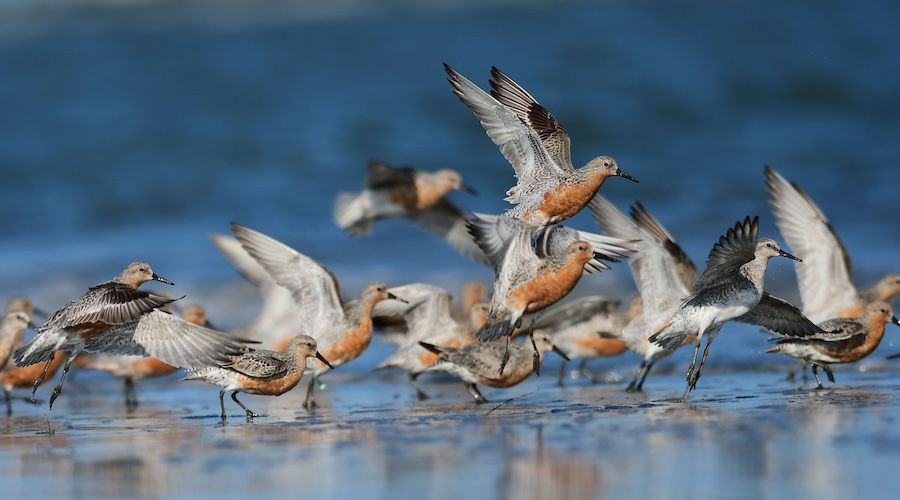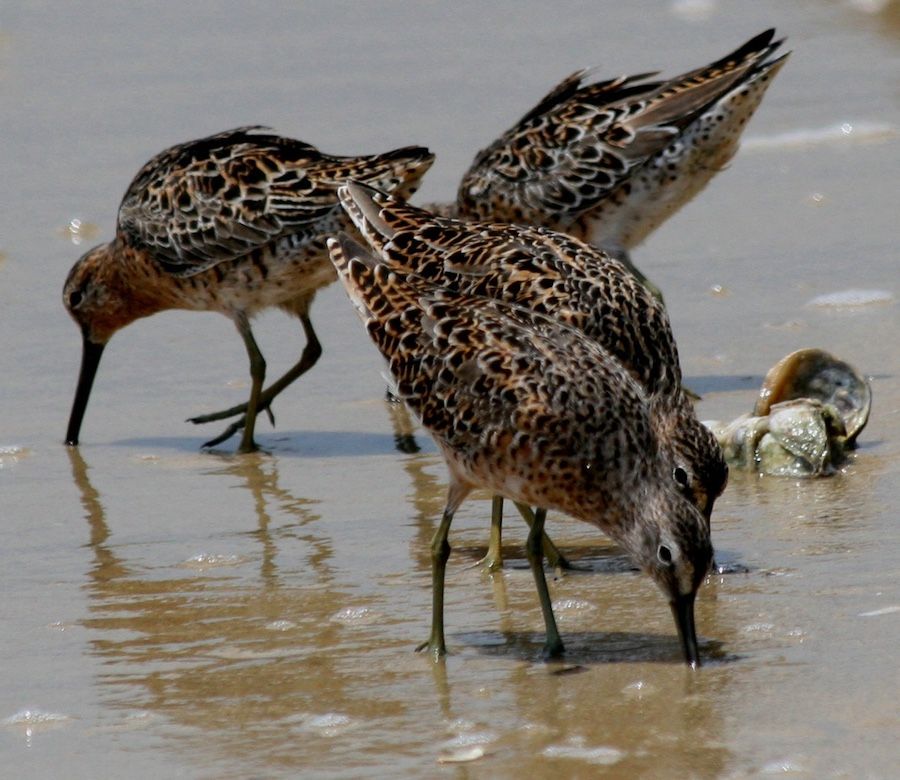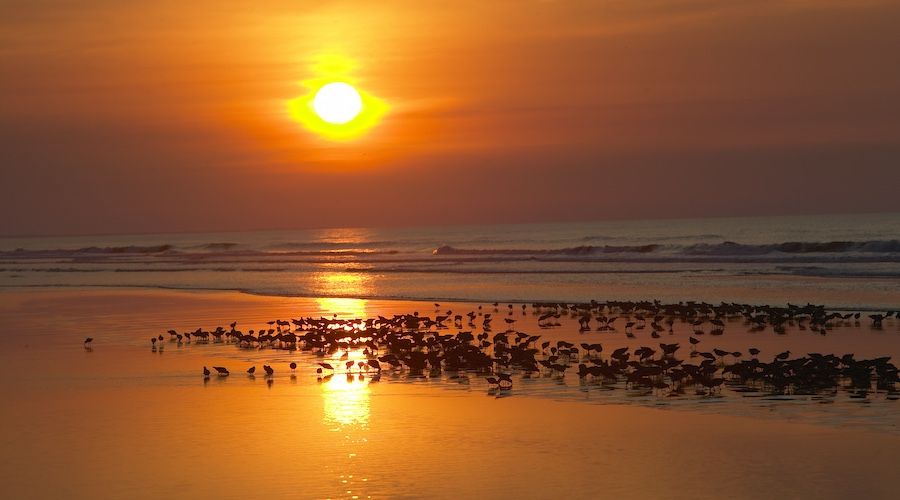post
Knot an Easy Journey
In the wild, many migratory birds do not have an easy journey — or in some cases, knot an easy journey. Some birds, such as the rufa red knot (Calidris canutus rufa), take their traveling to an entirely new level. While most of our bird-hobbyists recognize the beauty of shorebirds on Kiawah Island, others may not understand their importance, or how incredible they truly are. This simple looking, medium-sized sandpiper may not get as much attention as a regal bald eagle or colorful painted bunting, but their story is one of scientific wonder. One simple way to gain a deeper appreciation for Red Knots and other migratory birds is to book a birding excursion with one of Kiawah Island Golf Resort’s naturalists.

Red knots travel nearly 20,000 miles each year. Starting from the southern tip of South America in Tierra del Fuego and ending at their breeding grounds in the Arctic Circle, a single red knot travels about 9,300 miles during its spring migration alone. With a wingspan of only 20 inches, these birds might not look the part, but they carry out many feats of nature.
As red knots begin moving into Kiawah Island to rest, be sure to keep your eyes peeled. With spring here, more and more red knots have begun to appear. Kiawah and Seabrook Islands are known as “critical sites,” providing essential habitats where these birds can recuperate and rest undisturbed. In a 2020 study, data showed that 42% of the eastern red knot population landed on these two islands.

They rest in this area for a few reasons: first, it’s a relatively safe place for them to idle undisturbed, and second, it gives them access to an enormous supply of horseshoe crab eggs. When red knots arrive at these critical stopover sites along the Atlantic coast, their body weight has halved. Timing their arrival with horseshoe crab spawning, they can eat thousands of these eggs, building fat reserves to continue the rest of their journey while hardly impacting the horseshoe egg supply in the process. These eggs are the perfect size and consistency for red knots. They are high in both fat and protein as well as incredibly soft. This is highly important for these feathered migrants, due to them shrinking both their gizzard as well as their digestive organs during flight to allow their cardiovascular system to expand and aid them on their incredible journey.

As we welcome the migratory birds of Spring to our shores on Kiawah Island, it’s important that we understand and respect how far they have traveled to arrive here. Our red knot friends, for instance, still have thousands of miles left to travel before they complete their journey.
Help us ensure the health of our red knot population:
- Be sure to appreciate this gorgeous animal from a distance of at least 500 feet. Disturbing a federally protected species is not only illegal, but it can also severely hurt the species’ progress to recovery. If they are reacting to you, then you are too close.
- Keep dogs leashed and avoid disturbing or feeding sandpipers. Red knots and other Kiawah Island shorebirds are currently threatened or endangered, so it is vital that we keep these policies in place to help in the recovery of our beloved bird populations. Although it’s knot an easy journey, we can all do our part to help these fascinating creatures.
If you see someone disturbing shorebirds, contact the Kiawah Island Beach Patrol at 843-518-2880 or info@beachpatrolsc.org.